|
 Secure Site
Secure Site
|
 |
Archive for the 'Yoga Timer' Category
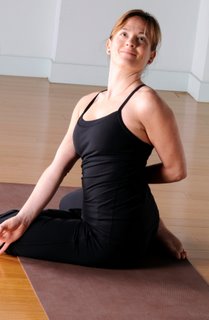 yoga There is one yogic breathing technique that can be practiced at all times of the day and night by just about anyone. This pranayama (breath control) is called ujjayi.
Ujjayi means “victorious.” The prefix ud means upward and superior, and jaya (from root ji) means to conquer and have victory over. With consistent practice of ujjayi breath, a practitioner will attain victorious results for both body and mind.
The benefits of ujjayi breath are manifold. In addition to aerating the lungs and removing excess phlegm, it boosts endurance and gently warms the body. This soothing breath massages and tones the entire nervous system, making it an excellent way to combat stress. It’s also believed to help counter high blood pressure.
While one should initially learn ujjayi breath in a seated position, in can later be consistently threaded through the entire asana practice.
Here’s how to practice:
1. Sit in a comfortable, upright meditation position (I encourage sitting on a folded blanket or pillow for extra support)
2. Maintaining a tall spine, close eyes and begin to breath normally through both nostrils. Observe the flow of the air in and out of the body.
3. Once you’re familiar with the course of the breath, take a deep, slow breath in through the nostrils. Try to focus the air in on the palate and back of the throat and create a sibilant sound (saaaa). It should be an ocean like sound, or like having your ear against a conch shell. Fill the lungs entirely and then…
4. Breath out slowly, focusing the air on the back of the throat/palate.
The sea-like sound is caused by a subtle constriction of the glottis, which is the aperture of the larynx.
The breath should be just loud enough that someone sitting close to you would hear it. Avoid being too loud of forceful. I’m fond of esteemed Ashtanga teacher Tim Miller’s description of ujjayi, “Imagine sipping the breath in through a straw. If the suction is too strong the straw collapses and great force is required to suck anything through it.”
5. Set your Zen Timer with Tibetan Bowl for 15 minutes. Continue to breathe for 5 to 15 minutes with this ocean like sound. If possible, take a brief savasana after.
More experienced practitioners, commit to carrying ujjayi breath through your entire asana practice. Let it be metronomic in quality.
Observe how much space you’ll discover in body and mind!
Sophie Herbert is an alignment focused yoga teacher (and perpetual student), a singer-songwriter, and a visual artist. She has lived, studied, and volunteered extensively in India; teaches yoga in Brooklyn and Manhattan; and recently released her first full-length album, “Take a Clear Look.” Please visit her website at SophieHerbert.com.
adapted from Wholeliving.com February 2011
Use our unique “Zen Clock” which functions as a Yoga Timer. It features a long-resonating acoustic chime that brings your meditation or yoga session to a gradual close, preserving the environment of stillness while also acting as an effective time signal. Our Yoga Timer & Clock can be programmed to chime at the end of the meditation or yoga session or periodically throughout the session as a kind of sonic yantra. The beauty and functionality of the Zen Clock/Timer makes it a meditation tool that can actually help you “make time” for meditation in your life. Bring yourself back to balance.
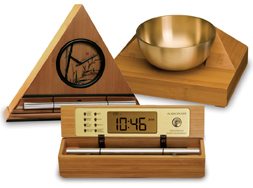 The Zen Timer and Clock Store - Boulder, Colorado Now & Zen – The Zen Timer Store
1638 Pearl Street
Boulder, CO 80302
(800) 779-6383
Posted in Chime Alarm Clocks, yoga, Yoga Timer, Yoga Timers by Now & Zen, zen, Zen Alarm Clock, Zen Clocks and Dream Recall, Zen Timers
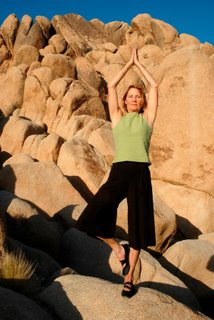 Tree Pose One of the most recognizable yoga asanas, Vrksasana (Tree Pose) has been identified in Indian relics dating back to the seventh century. “A figure standing in a one-legged balance is part of a famous stone carving in the town of Mahabalipuram,” says Tias Little, the director of YogaSource in Santa Fe, New Mexico. In ancient times, he says, wandering holy men called sadhus would meditate in this posture for long periods of time as a practice of self-discipline.
In some traditions, the pose is called Bhagirathasana, to honor a great yogi king from India who—legend says—stood on one leg for a long time to appease the Hindu god Shiva and to be allowed to bring the sacred river Ganges from heaven to earth. “This posture represents the intense penance of Bhagiratha,” says Kausthub Desikachar, son and student of the yoga master T.K.V. Desikachar and chief executive of the Krishnamacharya Yoga Madiram in Chennai, India. “It’s supposed to motivate us to work toward our goal even if there are many obstacles in the way.” That doesn’t mean you have to stand on one leg for years. “The point is to make a dedicated effort to one’s practice,” he says. “It makes us strong, it enhances our willpower, and we achieve amazing benefits.”
This ancient, reliable pose is often the first balance posture you learn, since it’s relatively simple and strengthens your legs and spine and opens your thighs and hips. When you practice balancing poses, you learn some practical lessons in how to get grounded, find your center, stay focused, and steady your mind. Plus, the process—falling and trying again—helps develop patience and persistence, humility, and good humor.
Boost your balance
Learning to balance often has more to do with your mental state than your physical abilities. If you’re stressed, or if your mind is scattered, your body is likely to be unsteady, too. And, of course, the very practice of trying to balance is stressful. Most of us, as we try to balance, have unsettling thoughts like “I can’t do this” or “Everyone’s watching me wobble.”
Luckily, there are three tools you can use to quiet distracting mental chatter and steady your mind:
1. Be aware of your breath. Paying attention to your breath helps unite body and mind and establish a state of physiologic calm. As yoga master B.K.S. Iyengar writes in his classic guide, Light on Yoga, “regulate the breathing, and thereby control the mind.”
2. Direct your gaze. Also called drishti, a steady gaze helps focus your mind. In Vrksasana, anchoring your gaze on the horizon or a fixed point directs energy forward to keep you upright.
3. Visualize your tree. Imagine that you are a tree—with your feet rooted firmly in the earth and your head extending up toward the sun. Take a moment to meditate on what “tree” means to you and find an image that suits your body and temperament—a graceful willow, a solid oak, a flirty palm. Invite this mental picture to guide you toward stability.
Posted in yoga, Yoga Timer, Yoga Timers by Now & Zen
 meditation Sitting in meditation can be challenging. You might feel anxious to get back to your busy day. Your mind wanders. Your foot falls asleep. But consider this: A regular meditation practice can make your brain work better.
Over the past few years, scientists have discovered that meditation helps the brain to process information more efficiently. One study, conducted at the University of Wisconsin-Madison, found that people who meditate capture information that others miss when presented with a series of visual cues in quick succession. The difference was most marked in longtime practitioners of vipassana meditation, but even novices who practiced just 20 minutes per day scored better than people who didn’t meditate.
Just as repeated practice of Sun Salutations builds strength and stamina, so regular meditation enhances the brain’s capacity for perception, awareness, and efficiency in processing, says Sat Bir Singh Khalsa, assistant professor of medicine at Brigham and Women’s Hospital, Harvard Medical School. “Meditation has both short- and long-term benefits to brain structure and function,” he says.
Another study, conducted through Massachusetts General Hospital, found that longtime meditators have a thicker insula, the part of the brain that links the emotional center with the thinking center. Some researchers say that this finding may explain a seeming paradox: In meditators, the amygdala, the part of the brain tied to the fight-or-flight impulse, is more active than in nonmeditators. But meditators also seem to be better able to calm that response than others.
“No one has proven why yet, but the theory is that meditators are more aware of what’s happening in their environment and better able to control their internal psychological and physiological responses to it,” says Khalsa.
adapted from Yoga Journal by Heather Boerner
Use our unique “Zen Clock” which functions as a Yoga & Meditation Timer. It features a long-resonating acoustic chime that brings your meditation or yoga session to a gradual close, preserving the environment of stillness while also acting as an effective time signal. Our Yoga Timer & Clock can be programmed to chime at the end of the meditation or yoga session or periodically throughout the session as a kind of sonic yantra. The beauty and functionality of the Zen Clock/Timer makes it a meditation tool that can actually help you “make time” for meditation in your life. Bring yourself back to balance.
 Meditation Timers and Chime Clocks Now & Zen – The Zen Meditation Timer Store
1638 Pearl Street
Boulder, CO 80302
(800) 779-6383
Posted in yoga, Yoga Timer, Yoga Timers by Now & Zen
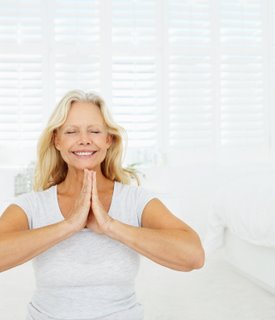 meditation lady having fun Plan a fun night with friends or book that workshop with a visiting yoga teacher—it may keep you healthy. Earlier this year researchers at Loma Linda University in California discovered that looking forward to an event boosts immunity. They compared the stress levels of two sets of students—one group was anticipating a positive experience; the other group was feeling neutral. Those in the first group had lower levels of stress hormones, including cortisol and epinephrine (adrenaline), which are known to weaken the immune system over time. “Our studies show that biological changes take place before and in anticipation of an event. Specifically, detrimental stress hormones decrease when you look forward to something you enjoy,” says Lee Berk, the study’s lead author. In 2001 the same researchers discovered that laughter increases immunity. What better excuse to invite some of your friends over to laugh out loud?
adapted from Yoga Journal by Catherine Gutherie
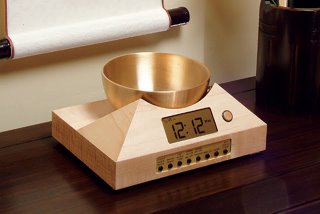 Tibetan Timer and Gentle Alarm Clock for Meditation Now & Zen
1638 Pearl Street
Boulder, CO 80302
(800) 779-6383
Posted in Well-being, yoga, Yoga Timer, Yoga Timers by Now & Zen
How to do it: Lying on the floor with both legs straight, hug one knee into your chest, drawing it in slowly and wrapping your arms around your shin. Breathe, exhaling with an “s” sound, for one to two minutes. Now flex the foot of your bent leg, hold it for 10 to 15 seconds, and release it back to a neutral position. Flex and release five times, then slowly lower the leg back down. Repeat on the other leg.
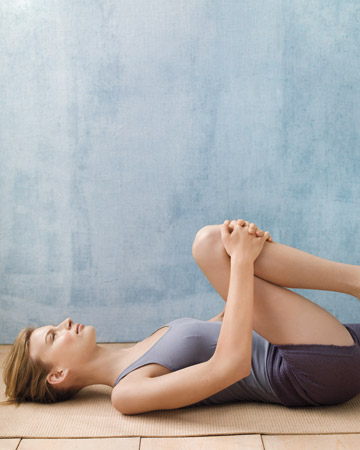 leg stretch What it does:
Opens the hips, relieves tension in the lower back, awakens the muscles in your ankles and feet, stretches the hamstrings.
adapted from Body + Soul Magazine
Use our unique “Zen Clock” which functions as a Yoga Timer. It features a long-resonating acoustic chime that brings your meditation or yoga session to a gradual close, preserving the environment of stillness while also acting as an effective time signal. Our Yoga Timer & Clock can be programmed to chime at the end of the meditation or yoga session or periodically throughout the session as a kind of sonic yantra. The beauty and functionality of the Zen Clock/Timer makes it a meditation tool that can actually help you “make time” for meditation in your life. Bring yourself back to balance.
 Zen Chime Alarm Clock and Timer Now & Zen – The Yoga Timer Store
1638 Pearl Street
Boulder, CO 80302
(800) 779-6383
Posted in Well-being, yoga, Yoga Timer, Yoga Timers by Now & Zen
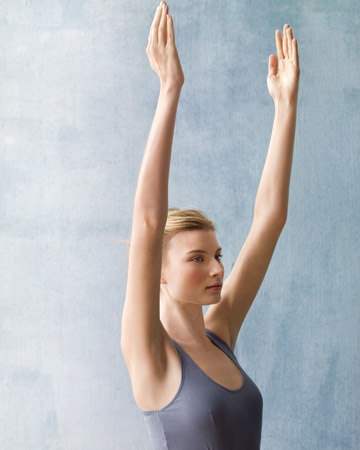 stretch out the stress What it does:
Opens the chest and sides of the torso, releases stiffness from the back and neck, tones core muscles and lengthens the spine, creates more space in the abdomen.
How to do it: Stand with feet shoulder-width apart and arms by your sides. Slowly reach your right arm out to the side and up over your head (left arm stays by your side). Keep the neck long and your right shoulder blade down and back. Now bend sideways to the left and hold for three breaths, making an “s” sound on the exhale. Return to vertical, reaching your right arm out to the side and back down. Repeat with the left arm. Now slowly reach both arms out to the sides and up over your head, again keeping your neck long and shoulder blades down and back. Reach your feet and legs down into the floor as your fingers and arms stretch up. Stay for five breaths, making an “s” sound on the exhale, and release.
adapted from Body + Soul Magazine
Use our unique “Zen Clock” which functions as a Yoga Timer. It features a long-resonating acoustic chime that brings your meditation or yoga session to a gradual close, preserving the environment of stillness while also acting as an effective time signal. Our Yoga Timer & Clock can be programmed to chime at the end of the meditation or yoga session or periodically throughout the session as a kind of sonic yantra. The beauty and functionality of the Zen Clock/Timer makes it a meditation tool that can actually help you “make time” for meditation in your life. Bring yourself back to balance.
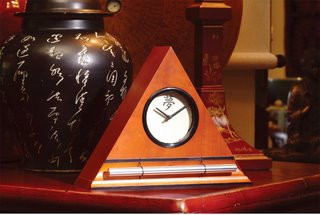 Gentle Wake Up Alarm Clocks with Chimes Now & Zen – The Yoga Timer Store
1638 Pearl Street
Boulder, CO 80302
(800) 779-6383
Posted in Well-being, yoga, Yoga Timer, Yoga Timers by Now & Zen
 Jaw and Neck Release Stretch The Stress Out
What it does: Releases tension from the jaw, neck, and shoulders; deepens breathing.
How to do it: Sit tall in a chair. Inhale deply; as you exhale, make a “ha” sound, gradually opening your mouth as far as you can without straining your jaw muscles. Let gravity do most of the work. Close your mouth as you inhale and repeat eight to 10 times, opening your mouth wider while using less muscular effort each time.
Now focus on the neck. Still sitting tall, drop your chin toward your chest and take several breaths. Then tilt your head back and look up at the ceiling for several breaths. Bring your head back to the center, inhale, and then turn and look to the right as you exhale. Pause for an inhale, then exhale as you slowly rotate your head to look left. Inhale, then exhale as you rotate your head to the right. Continue until you’ve looked right and left five times each.
adapted from Body + Soul
Use our unique “Zen Clock” which functions as a Yoga Timer. It features a long-resonating acoustic chime that brings your meditation or yoga session to a gradual close, preserving the environment of stillness while also acting as an effective time signal. Our Yoga Timer & Clock can be programmed to chime at the end of the meditation or yoga session or periodically throughout the session as a kind of sonic yantra. The beauty and functionality of the Zen Clock/Timer makes it a meditation tool that can actually help you “make time” for meditation in your life. Bring yourself back to balance.
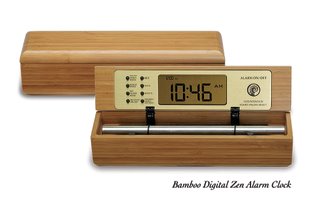 Yoga timers from Boulder, Colorado
Now & Zen – The Yoga Timer Store
1638 Pearl Street
Boulder, CO 80302
(800) 779-6383
Posted in Well-being, yoga, Yoga Timer, Yoga Timers by Now & Zen, Zen Timers
 yoga stretch What it does:
Stretches the chest and upper-back muscles, improves posture.
How to do it: Sit tall in a chair. Bend elbows and interlace your hands behind your head. Tilt your head back slightly and let the weight of your head rest in your hands. Lift your spine and chest up toward the ceiling. If it’s comfortable, arch the uppermost portion of your spine slightly back, but keep your focus on lifting up the chest. Stay for up to one minute, breathing deeply and exhaling with an “s” sound.
adapted from Body + Soul Magazine
Use our unique “Zen Clock” which functions as a Yoga Timer. It features a long-resonating acoustic chime that brings your meditation or yoga session to a gradual close, preserving the environment of stillness while also acting as an effective time signal. Our Yoga Timer & Clock can be programmed to chime at the end of the meditation or yoga session or periodically throughout the session as a kind of sonic yantra. The beauty and functionality of the Zen Clock/Timer makes it a meditation tool that can actually help you “make time” for meditation in your life. Bring yourself back to balance.
 Yoga timers and gentle wake up clocks with chimes Now & Zen – The Yoga Timer Store
1638 Pearl Street
Boulder, CO 80302
(800) 779-6383
Posted in Bamboo Chime Clocks, mindfulness practice, Well-being, yoga, Yoga Timer, Yoga Timers by Now & Zen
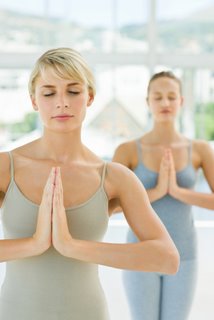 yoga Unless you’re a professional athlete, chances are you’re not getting a balanced workout during your workday. Whether you’re slaving away at a desk, making rounds, or waiting tables, you’re likely straining some muscles while ignoring others, leaving your body feeling stiff, sore, and physically exhausted. Deadlines and pressure from bosses don’t help matters, either.
“When you get stressed, you often hold your breath, which leads to holding your muscles. It feels like you’re wearing a straitjacket,” explains Elaine Petrone, a stress- and pain-management expert and creator of the “Stop the Back Pain” DVD.
You can stretch out the stress, though, with a little time and effort. “By pairing mindful stretches with deep breathing, you’ll make lasting, positive changes to the way your body works, looks, and feels,” says Petrone, who helped us develop this rejuvenating routine. Done for 15 to 20 minutes, three times a week, it paves the way to a calmer, less achy, and more energized you.
adapted from Body + Soul Magazine
Use our unique “Zen Clock” which functions as a Yoga Timer. It features a long-resonating acoustic chime that brings your meditation or yoga session to a gradual close, preserving the environment of stillness while also acting as an effective time signal. Our Yoga Timer & Clock can be programmed to chime at the end of the meditation or yoga session or periodically throughout the session as a kind of sonic yantra. The beauty and functionality of the Zen Clock/Timer makes it a meditation tool that can actually help you “make time” for meditation in your life. Bring yourself back to balance.
 Zen Alarm Clocks and Yoga Timers with Gentle Chime Now & Zen – The Yoga Timer Store
1638 Pearl Street
Boulder, CO 80302
(800) 779-6383
Posted in Bamboo Chime Clocks, Well-being, yoga, Yoga Timer, Yoga Timers by Now & Zen, Zen Timers
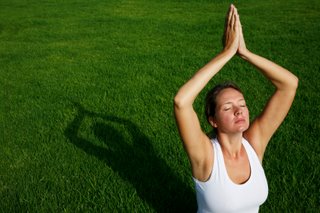 Outdoor Yoga That most familiar of asana sequences, Surya Namaskar (Sun Salutation) is as rich in symbolic and mythic overtones as it is in physical benefits.
In many cultures, light has long been a symbol of consciousness and self-illumination. “The world begins with the coming of light,” wrote Jungian analyst Erich Neumann in The Origins and History of Consciousness (Princeton University Press, 1995). “Opposition between light and darkness has informed the spiritual world of all peoples and molded it into shape.”
Our primary source of light is, of course, the sun. When we look at our closest star, we may see nothing more than a big yellow ball. But for thousands of years, the Hindus have revered the sun, which they call Surya, as both the physical and spiritual heart of our world and the creator of all life itself. That’s why one of Surya’s many other appellations is Savitri (the Vivifier), who, according to the Rig Veda, “begets and feeds mankind in various manners” (III.55.19). Moreover, since everything that exists originates from the sun, as Alain DaniŽlou wrote in The Myths and Gods of India (Inner Traditions, 1991), it “must contain the potentiality of all that is to be known.” For the Hindus, the sun is the “eye of the world” (loka chakshus), seeing and uniting all selves in itself, an image of and a pathway to the divine.
One of the means of honoring the sun is through the dynamic asana sequence Surya Namaskar (better known as Sun Salutation). The Sanskrit word namaskar stems from namas, which means “to bow to” or “to adore.” (The familiar phrase we use to close our yoga classes, namaste—te means “you”—also comes from this root.) Each Sun Salutation begins and ends with the joined-hands mudra (gesture) touched to the heart. This placement is no accident; only the heart can know the truth.
The ancient yogis taught that each of us replicates the world at large, embodying “rivers, seas, mountains, fields…stars and planets…the sun and moon” (Shiva Samhita, II.1-3). The outer sun, they asserted, is in reality a token of our own “inner sun,” which corresponds to our subtle, or spiritual, heart. Here is the seat of consciousness and higher wisdom (jnana) and, in some traditions, the domicile of the embodied self (jivatman).
It might seem strange to us that the yogis place the seat of wisdom in the heart, which we typically associate with our emotions, and not the brain. But in yoga, the brain is actually symbolized by the moon, which reflects the sun’s light but generates none of its own. This kind of knowledge is worthwhile for dealing with mundane affairs, and is even necessary to a certain extent for the lower stages of spiritual practice. But in the end, the brain is inherently limited in what it can know and is prone to what Patanjali calls misconception (viparyaya) or false knowledge of the self.
The eight basic postures, in order of performance, are Tadasana (Mountain Pose), Urdhva Hastasana (Upward Salute), Uttanasana (Standing Forward Bend), Lunge, Plank Pose, Chaturanga Dandasana (Four-Limbed Staff Pose), Urdhva Mukha Svanasana (Upward-Facing Dog Pose), and Adho Mukha Svanasana (Downward-Facing Dog Pose).
The transition from posture to posture is facilitated by either an inhalation or an exhalation. As you move through the sequence, watch your breath closely. Slow your pace or stop and rest entirely if your breathing becomes labored or shuts down altogether. Always breathe through your nose, not your mouth: Nasal breathing filters and warms incoming air and slows your breathing down, thereby lending the sequence a meditative quality and reducing the risk of hyperventilation.
To perform the sequence, start in Tadasana, with your hands together at your heart. Inhale and lift your arms overhead to Urdhva Hastasana, then exhale while lowering the arms down and fold your torso into Uttanasana. Then inhale, arch your torso into a slight backbend with the fingertips or palms pressed to the floor or blocks, and exhale while bringing your left foot back into a lunge. Inhale forward to Plank, then exhale and lower yourself into Chaturanga Dandasana. On an inhalation, arch your torso up as you straighten your arms into Upward Dog. Exhale back to Downward Dog; step the left foot forward on an inhalation into Lunge. Swing the right leg forward to Uttanasana on an exhalation, then lift your torso and reach your arms overhead on an inhalation to Urdhva Hastasana. Finally, lower your arms on an exhalation and return to your starting point, Tadasana.
Remember, this is only a half-round; you’ll need to repeat the sequence, switching left to right and right to left to complete a full round. If you’re just starting out, it might help to work on the poses individually before you put them together. (Visit www.YogaJournal.com for more how-to information.)
adapted from Yoga Journal, by Richard Rosen
Use our unique “Zen Clock” which functions as a Yoga Timer. It features a long-resonating acoustic chime that brings your meditation or yoga session to a gradual close, preserving the environment of stillness while also acting as an effective time signal. Our Yoga Timer & Clock can be programmed to chime at the end of the meditation or yoga session or periodically throughout the session as a kind of sonic yantra. The beauty and functionality of the Zen Clock/Timer makes it a meditation tool that can actually help you “make time” for meditation in your life. Bring yourself back to balance.
 Yoga timers from Boulder, Colorado Now & Zen – The Yoga Timer Store
1638 Pearl Street
Boulder, CO 80302
(800) 779-6383
Posted in intention, Now & Zen Alarm Clocks, wake up alarm clock, Well-being, yoga, Yoga Timer, Yoga Timers by Now & Zen
« Previous Page — « Previous Entries
Next Entries » — Next Page »
|
|
|
|